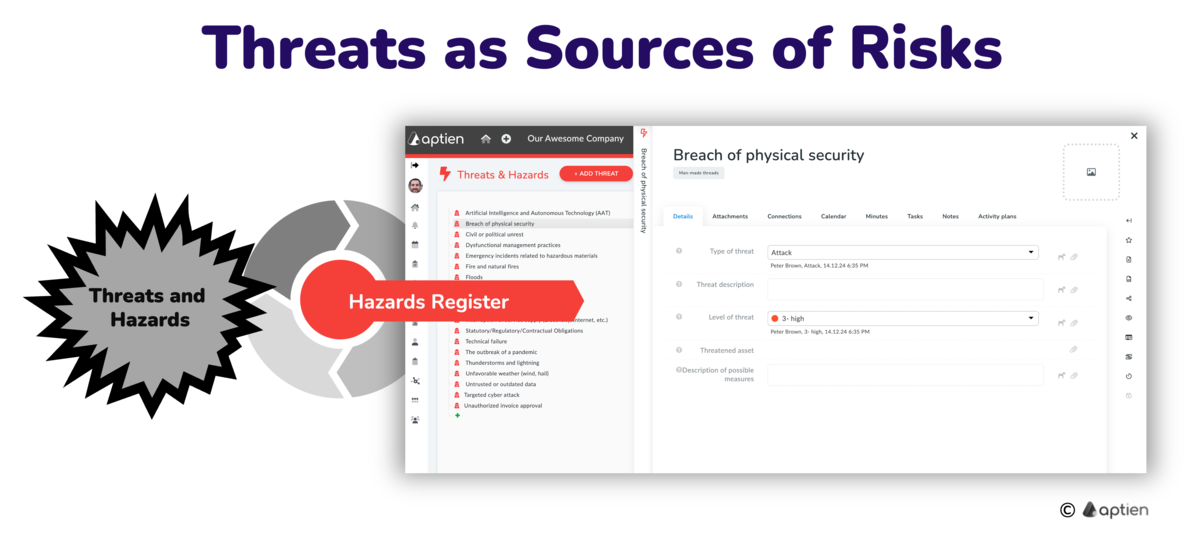Definition of a Hazard
A hazard is a property or characteristic of something, such as a work environment, material, machine, or climatic condition, that increases the likelihood of a problematic situation occurring. Hazards are active properties capable of causing negative outcomes. Similar to threats, hazards serve as sources of risk. They can be physical, chemical, biological, or psychological.
- hazard is anything that can cause harm
Examples of Most Common Hazards in Small and Medium Businesses
Dangerous Natural Conditions
- Floodplains
- Areas prone to hurricanes and storms
Unsafe Workplace and Working Conditions
- Working at heights
- Handling combustibles
- Working with hazardous chemicals
- Exposure to extreme temperatures (high or low)
- Operating moving machinery
- Exposure to radiation
Technical Failures
- Malfunctioning equipment
- Poorly designed technology
Hazardous Materials and Technology
- Chemical substances (including biological hazards)
- Inadequately designed technology
Unsafe Human Behavior (Man-Made Hazards)
- Locations with high crime rates
- Targeted cyber attacks
- Physical attacks and sabotage
Hazard vs. Threat
Sometimes “threats” and “hazards” are used interchangeably as sources of risk. In simple terms, they are “things that can harm assets, processes, or people.” Risk management professionals, however, make a clear distinction:
- In workplace safety (EHS/OSHA), the term “Hazard” is more common (e.g., chemical hazard, fire hazard).
- In cybersecurity, business continuity, and strategic management, the term “Threat” is commonly used.
Hazard
- A hazard has a more persistent, underlying nature. It represents conditions or sources with the potential to cause a threat or risk (for example, the hazard of injury from a specific machine).
- Examples: workplace hazards such as chemical, physical, or ergonomic hazards.
Threat
- We talk about a threat when there is a real occurrence of an event or action, i.e., the emergence of a specific, actual incident.
- A threat is, for example, a specific attack (such as a DDoS attack) that targets a vulnerability in a process or asset.
- Examples: cyberattacks, external threats, intentional or unintentional incidents.
Why and why is it important to know the hazards
- Hazard is a Source of Risk: Hazards serve as the foundation for risk. Identifying hazards is crucial for effective risk management.
- When an asset remains permanently exposed to a hazard, the likelihood of an incident occurring significantly rises.
- Identifying hazards in advance allows organizations to prepare for potentially dangerous situations and minimize their impact.
- Hazard assessment is an integral part of comprehensive risk analysis.
How Aptien help manage hazards and danger
- List of possible hazards a dangers is part of the risk management system, you keep an overview of them together with the threats in the threat catalog.
- Hazards are a source of risk together with threats, so you hazard assessment is part of risk analysis


